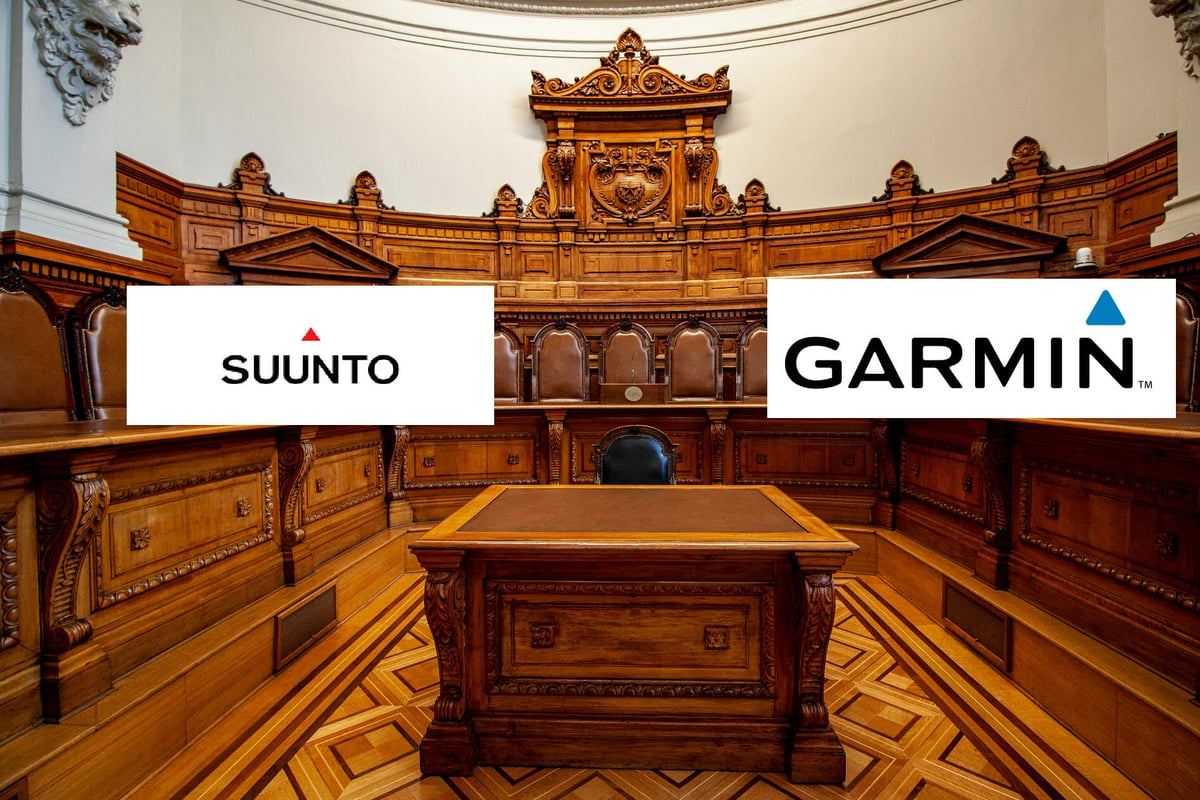
Photo by Rai Singh Uriarte on Unsplash (Modified)
Suunto Sues Garmin: 5 Core Watch Features Allegedly Stolen
Garmin is under siege. Just one day after Strava filed a risky lawsuit, Finnish outdoor giant Suunto Oy has now launched an aggressive patent war, claiming Garmin has illegally copied five of its core innovations. The patents cover everything from energy-efficient respiration monitoring to the very structure of the watch’s antenna. Is this the start of a battle for the heart of the smartwatch market and Garmin’s $1bn cash stockpile? Let’s see.
Why Now?
The Chinese Liesheng Group now owns Suunto Oy. It’s been a few years since the takeover, with much happening since as the two firms integrated their businesses. That seems to have settled down, with the company bringing out a series of well-received products in 2025, like Race 2.
One of the key assets acquired by Liesheng was Suunto’s patent library. The new owners must consider that the time is now ripe to protect their inventions. They believe Garmin has used their inventions and that a financial remedy is due; it’s as simple as that.
Case Details here via: Case 2.25-cv-00967-JRG Suunto Oy vs Garmin Limited

Case 2.25-cv-00967-JRG Suunto Oy vs Garmin Limited
Suunto requests that the case be heard before a jury in the Eastern District of Texas, which it will have chosen carefully, considering it as the favourable jurisdiction. Suunto is seeking financial damages for Garmin’s continued infringement of its patents. Specifically, it is looking for an amount that covers lost profits and reflects a reasonable royalty for using the patents. Further, it requests that Suunto be awarded a monetary award to stop Garmin from using the functionality.
The Five Patents
The lawsuit hinges on five specific U.S. Patents, which Suunto asserts have “revolutionised technologies related to wearable devices, such as smartwatches.” Here are the patents in brief.
1. Golf Shot Tracking Technology (U.S. Patent No. 7,489,241) performs three key functions in the background:
- Detecting a strike event (when the ball is hit).
- Determining the GPS position where the ball was struck.
- Recording that GPS position.
2. Energy-Efficient Respiration Rate Monitoring (U.S. Patent No. 8,021,306)
This patent concerns the use of HRV derived from an optical HR sensor, specifically how that is used to determine respiration rates in an energy-efficient way.
3, 4, 5. Smartwatch Structural and Antenna Components (U.S. Patent No. 11,018,432, No. 7,271,774, and No. 10,734,731 )
Three other patents relate generally to the structural and signal components of the watches, specifically what are referred to as Slot Mode Antennas and their assemblies.
Which Products Are Affected?
The scope covered by these cases is significant and wide-reaching.
- Golf Shot Tracking: Targets the Approach S20 (and newer), MARQ Golfer, Fenix 7 & 8 series, and the Epix series.
- Respiration Rate Monitoring: Affects a vast range of products, including Fenix 6 onwards, Forerunner 55 and above, and Instinct 2 and above.
- Antenna Components: Claims are brought against the Fenix 5 series and all subsequent models.
What Next?
Unlike Garmin vs. Strava, this case may well end in court. Suunto will look for significant sums, and Garmin cannot simply roll over.
In the industry-famous case of Massimo vs Apple, we saw that a solution for Apple, once it lost, was to disable the feature on its Watch and come back later with a modified method that involved running the same algorithm on the smartphone! That was a relatively straightforward solution. If Garmin is ruled against on the antenna claims, it cannot simply disable the GPS. It is a fundamental feature.
The metrics side of the Suunto case is similar in scope and impact to Apple’s SpO2 legal woes. Sure, that respiration metric is essential in some of the follow-on sleep and wellness insights, but if that gets entirely turned off (worst case), it’s not the end of the world for Garmin. With the golf features, they too are not essential to the products in question. If the features were removed, it would be classed as ‘very annoying’ rather than commercially fatal.
I guess you can see where I’m going here. Garmin has a lot to lose, but Suunto will want a lot (of money); it has a lot to gain.
What transpires will depend on the merits of the case. If Garmin has a good hand, it will follow the full course and hope to outpay Suunto with legal fees. If Garmin’s case is shaky, it will have to pay up, and it’s best to do that in an agreed-upon way rather than be forced to by the court. An agreed-upon settlement would most likely include an ongoing licensing fee for Suunto.
In the current political climate, you might wonder if an American defendant (Garmin) might hope for more favourable treatment. But one thing is certain: The legal expenses alone guarantee that this Smartwatch Showdown will cost Garmin millions, regardless of the verdict.
